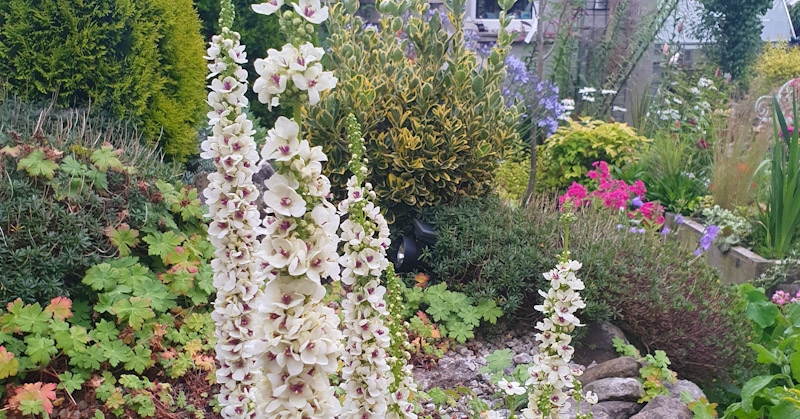Did you know? The leaves of some species are also known for their soft, fuzzy texture, which has led to their historical use as toilet paper or as a material for torches.
Verbascum is commonly known as mullein, native to Europe, Asia, and North Africa but have been naturalized in various parts of the world.
These plants are known for their tall stature, with some species reaching heights of up to 2 meters (6.5 feet). They have a biennial growth habit, meaning they typically complete their life cycle over two years. In the first year, they produce a basal rosette of large, soft, fuzzy leaves. In the second year, they send up a tall flowering stalk, which is adorned with numerous small, yellow flowers.

The flowers of Verbascum are arranged in dense spikes or racemes, and they have five petals with prominent stamens. The flowers typically open from the bottom of the spike upwards, providing an elongated blooming period. Mullein flowers are attractive to pollinators like bees and butterflies.
Verbascum plants have a long history of medicinal and herbal uses. Traditionally, the leaves and flowers of certain species have been used to make herbal teas, tinctures, and extracts. Mullein is often sought after for its soothing properties and is commonly used for respiratory conditions such as coughs, bronchitis, and asthma.
In addition to its medicinal uses, Verbascum has also been valued as an ornamental plant in gardens. Some popular cultivars have been developed for their attractive flower colors, including shades of yellow, purple, and white. Due to their tall stature, mullein plants are often used as vertical accents or to add architectural interest to garden landscapes.

I grew this from seed in 2021 and it’s still going strong. So much for just lasting two years!

